How can peppers be tied up in a greenhouse?
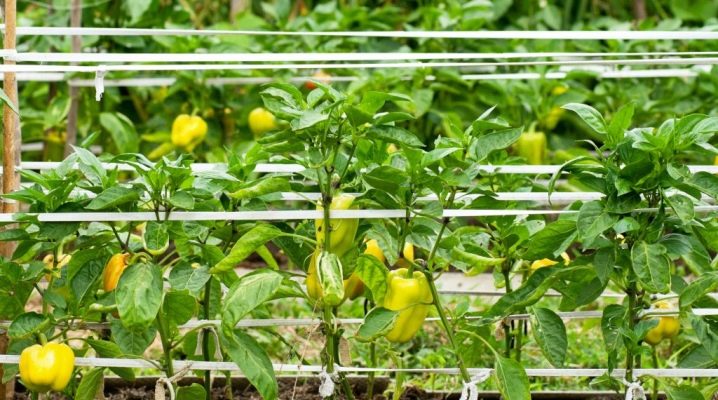
Bell peppers are one of the most popular vegetable crops. When grown in a greenhouse, tying is used today. How relevant this is and how to tie a vegetable correctly, read on.
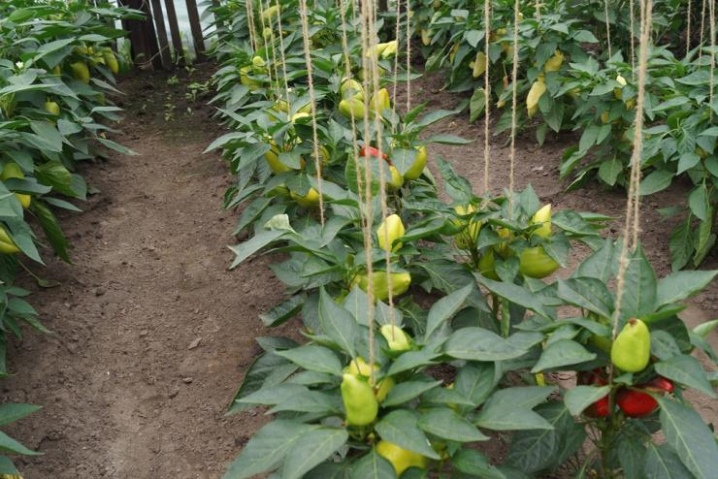
The need for a procedure
Tying a growing vegetable is one of the key steps in leaving. In this regard, pepper is no exception. A garter is used to fix the stems. The pepper has a vertical structure: based on its variety, the stem length can reach up to 1.5 m. The lower above-ground part of the trunk is rather rigid. However, the top under the weight of ripening fruits may not cope with the weight load. So that it does not break, they resort to tying the stem. This is a measure to prevent deformation of the plant. It happens that long bushes, unable to cope with the weight of the fruit, bend over.
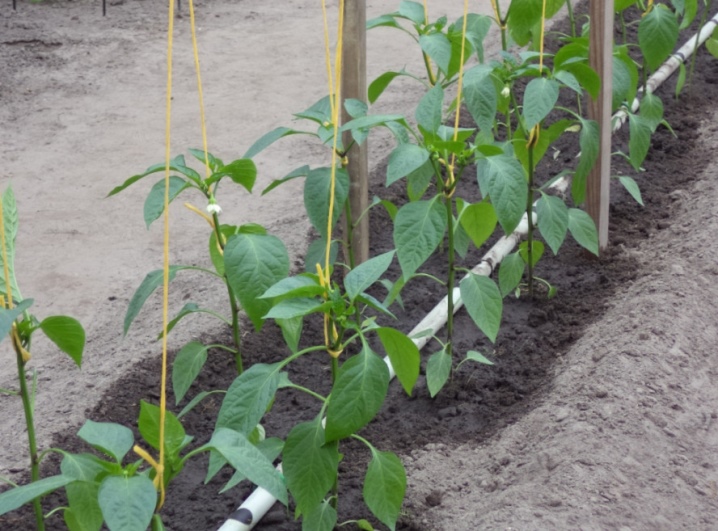
Tying peppers in a polycarbonate greenhouse is necessary in order to provide them with the correct circulation of beneficial nutrients. This happens best when the stem is upright. Many summer residents are sure that the garter solves the issue of increasing yields and is one of the important agricultural works. However, it is not necessary for all varieties of pepper.
For example, it is not necessary if low-growing peppers are grown in the greenhouse. Its strong and well-developed stem can support the weight of small fruits without bending or breaking. As a rule, such bushes have few fruits. The garter is needed for tall or hybrid peppers.

Most often, about 15-25 fruits are tied on each bush. In such cases, stem fixation is a necessary measure. In addition to her, sometimes you have to create additional support and fruits.
Tying improves the microclimate for greenhouse plants. It increases the light transmission between the bushes. Improves air circulation, facilitates crop care, including loosening, hilling, watering and feeding.
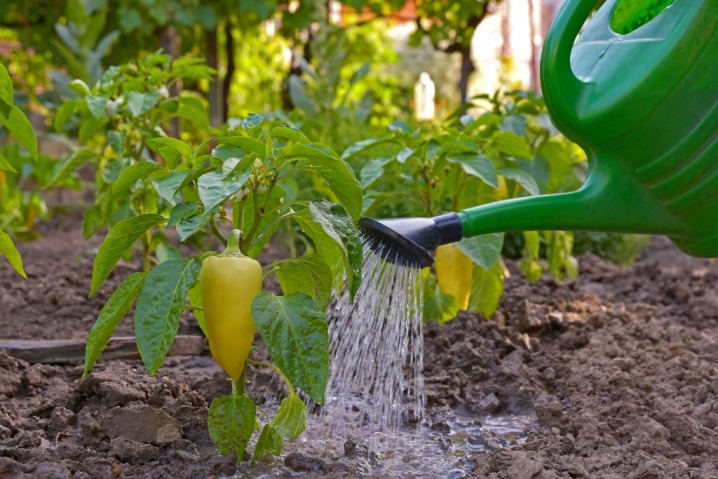
Garter methods
The correct tying of a vegetable crop involves a number of nuances. The stem must be tied up in such a way that the natural position is preserved. Therefore, the garter should be predominantly vertical. Due to this, bending and breaking of the stem are excluded. They fix it at the moment when the seedling has grown stronger after transplanting and has not yet entered the fruiting phase. Someone is guided by how the bush begins to tilt to the side. Usually the stems are tied up when the bush grows to 35-40 cm. The garter itself depends on the variety and number of brushes. As a rule, they try to securely tie each stalk of pepper.
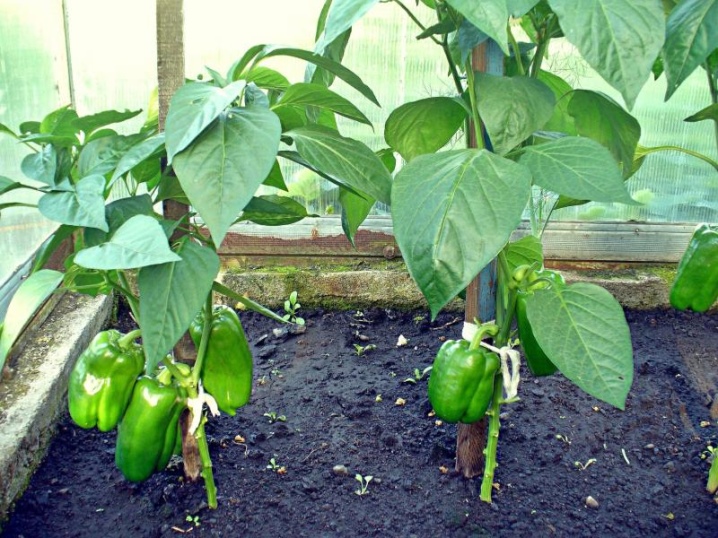
The basic principle of a garter is to be attached to ropes. To do this, a crossbar is installed at the edges of the ridges or a garden wire (rope) is tied, to which other ropes will be attached in the future. At the base of each bush, a loop is made of rope. For this, twine or special fibrous material is used. The knot on the hinge should not be tight. Everything must be done so that, if necessary, it can be weakened. Then the rope is pulled up, loosely braiding the stem of the plant. It is fixed on the upper crossbar so that the rope has no sagging. At the same time, strong tension is unacceptable.
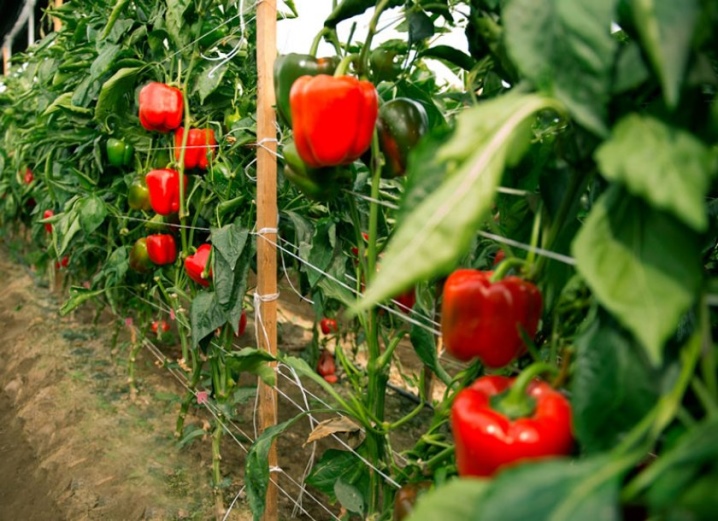
In polycarbonate greenhouses, it is not necessary to install supports and crossbars. In this case, tying is performed without stakes.The wire or twine is fixed at the top of the greenhouse to the slats of the greenhouse structure. The V-shaped garter is similar to the traditional one. Its only difference is the use of two ropes for one bush (separate for each stem and placed on a horizontal cord with equal pitch).
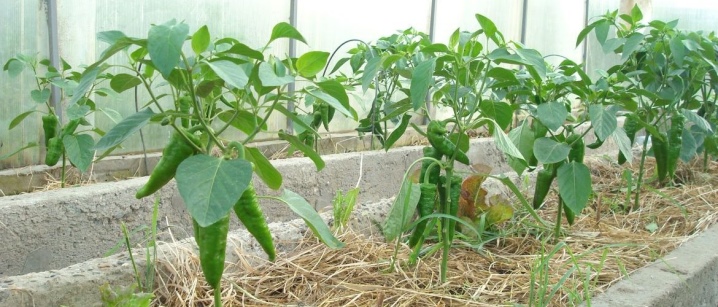
Convenient and fast budget technique - a garter to stakes and rods. To do this, a support post is fixed near each main stem, to which a bush is tied with nylon or textile tapes. Both materials are harmless to plants, can be quickly removed as unnecessary and can be reused next year. You need to tie up the stems correctly, fixing the growths with strong threads.
Weak shoots are not touched so that they can gain strength. During the garter, one should not forget about the formation of peppers. It is important to timely remove shoots growing inside the bushes.
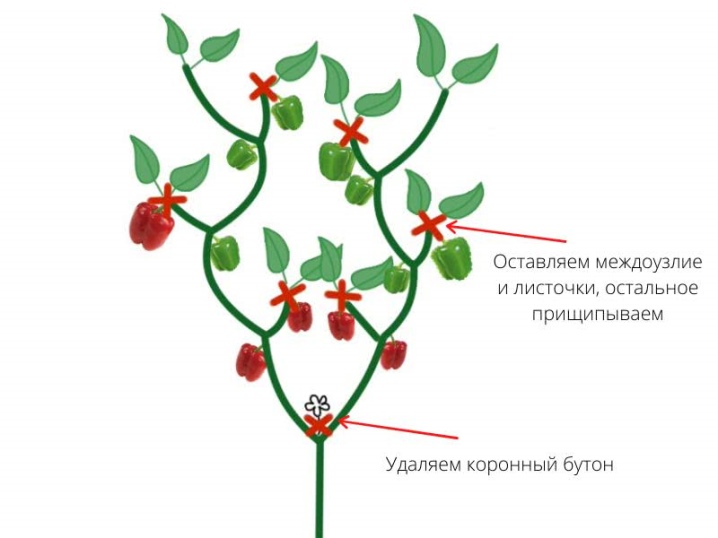
One popular way to create support is to use metal pins and wire. For such a garter, take a pin with a hook at the end, stick it near the bush. Cut off a small section of the wire (mounting aluminum wire), bent it at the end, making a hook. After that, each branch is suspended on a wire, creating support for all fruits. With this technique, you can maintain the upper branches.
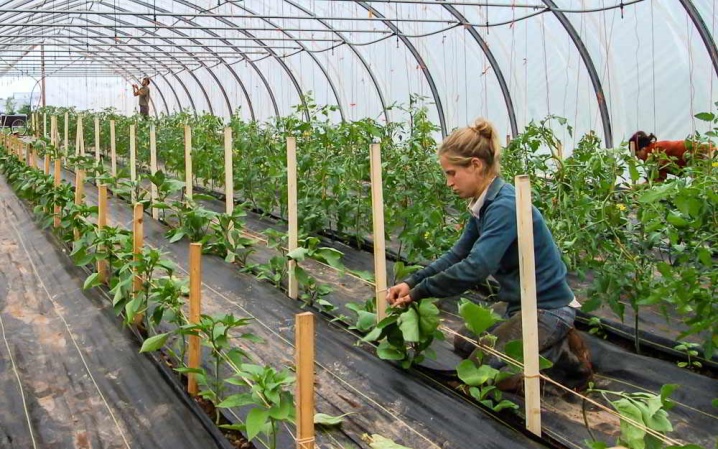
Wire hooks and twine can be used for the garter. Someone uses old unnecessary electrodes for these purposes. In the absence of electrodes, you can take heavy boards, bars, bricks. With this garter technique, the stem itself is not tied. The rope is tied on a hook, tied to the upper bar with a movable knot for further tension adjustment. The stake is stuck next to the bush, slightly pulling the rope and wrapping around the top in 1 circle. You can tighten the rope as the bush grows and the fruits form. Then the load will be greater.
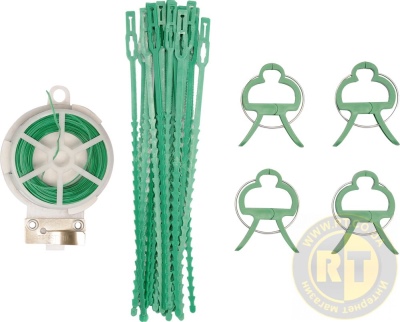
This garter is easy to track when formed into 1 stem. When forming a bush of 2 stems, it is enough to add another rope to the peg, pushing it at the top on the bar. The technique is good for those cases where the division of the stem is higher than usual. In this case, when picking fruits, the bush simply cannot withstand their increase in mass. If the bush is formed into 3 stems, you can increase the number of stakes by one seedling.
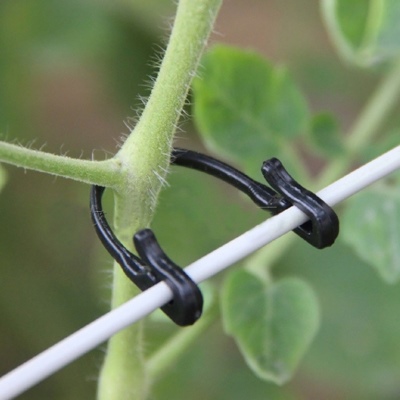
Useful Tips
Timely garter of peppers in the greenhouse will allow you to get a high yield of selected fleshy fruits. It must be carried out in compliance with all the rules of agricultural technology, since the health of the bushes depends on it. When choosing a particular garter scheme, they are guided by the convenience of technology and their own preferences. The most popular type of fixation is considered to be tying according to the principle of a horizontal trellis. In this case, the rope or wire is pulled under the roof, and ropes twisting around the bushes already go down from them. The advantage of the technique is sliding assemblies, which provide for a change in the level of fastening.
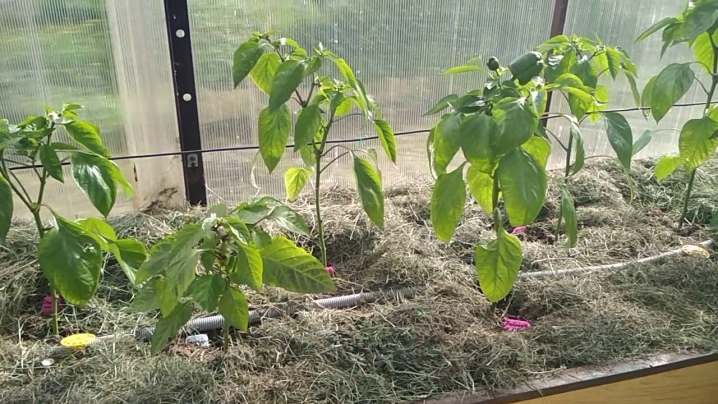
When choosing a garter using stakes, you need to sharpen their bottom. With long beds, only a few stakes are driven into the length, pulling a rope between them to tie the bushes by the stems. You need to fasten the rope to the stem carefully, without squeezing or damaging the trunk. The best way to tie it is with a figure-of-eight knot. It is harmless to strapping and is easy to untie. The garter is used for healthy plants.
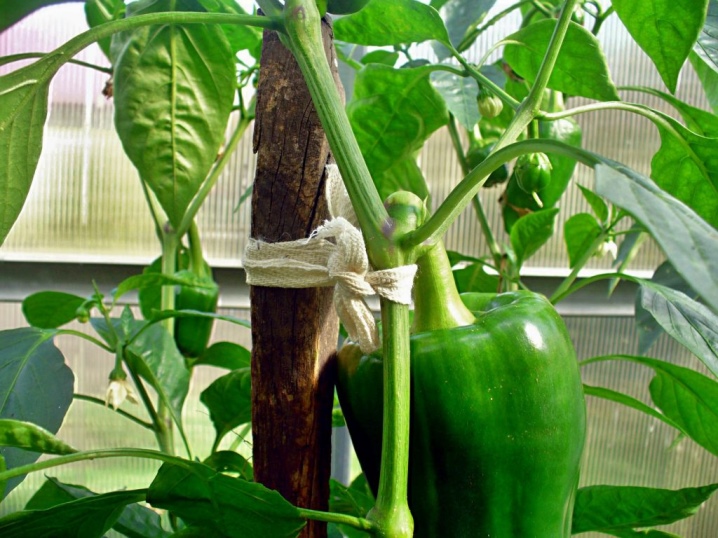
In order not to damage the root system of plants when using the technique with stakes, they are placed a couple of centimeters further from the main stem. This technique is sometimes used when planting overgrown seedlings.
Occasionally they also resort to a circular garter. It is suitable for spreading bushes and involves attaching all the brushes to a peg.
After harvesting, all garter structures are dismantled and processed, harvested until next year.
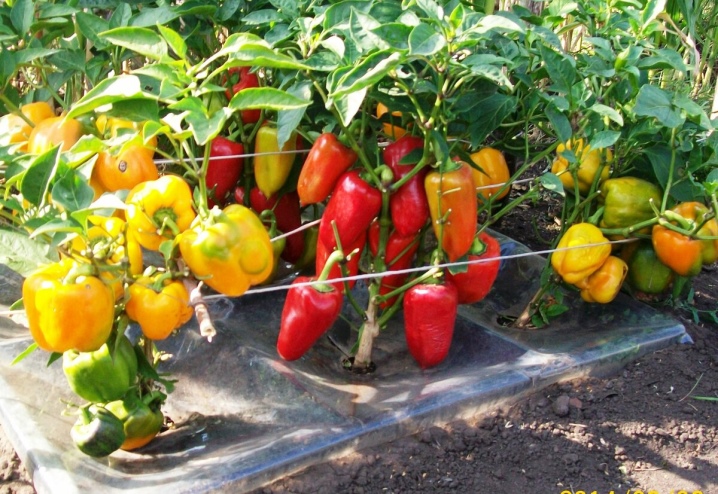













The comment was sent successfully.